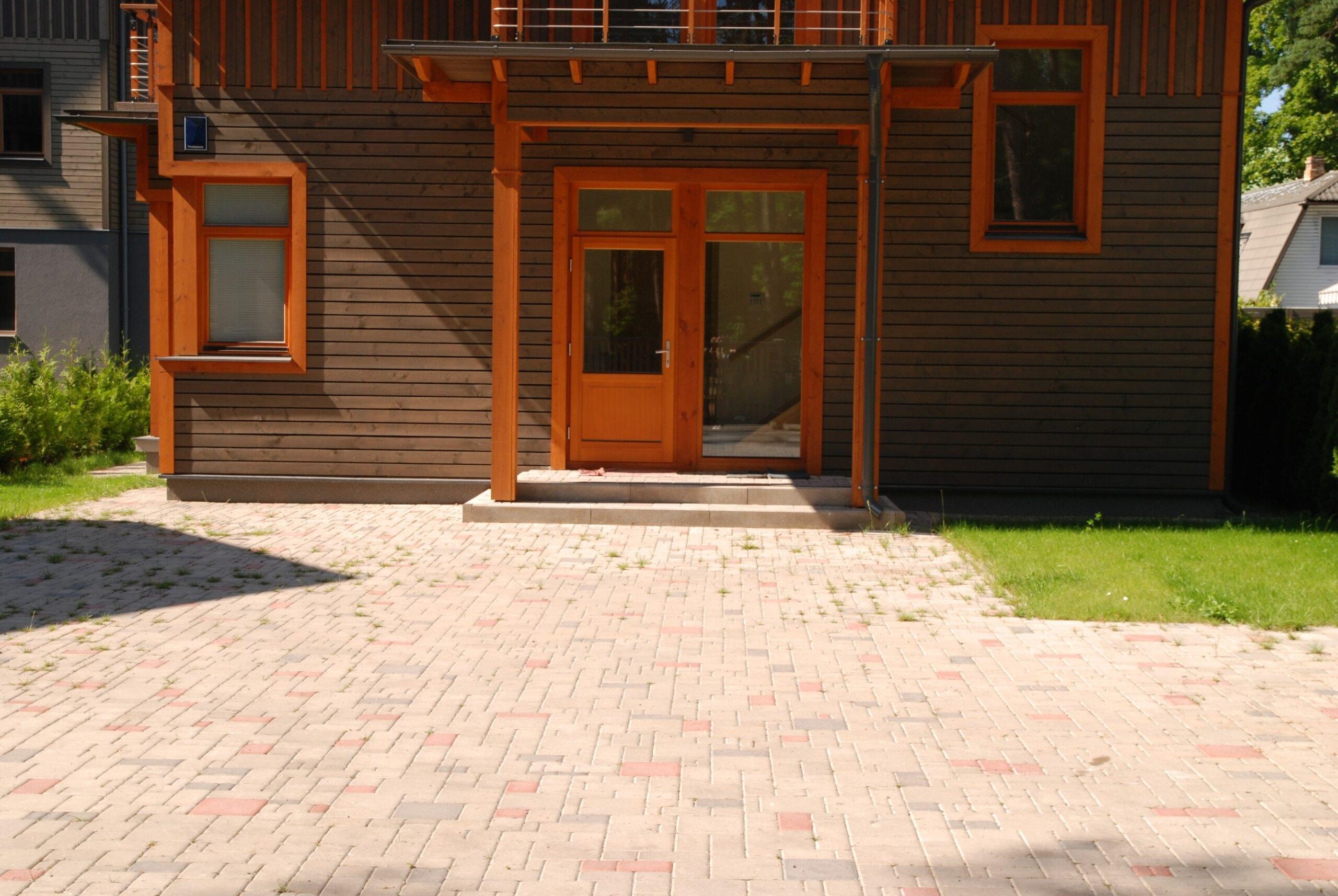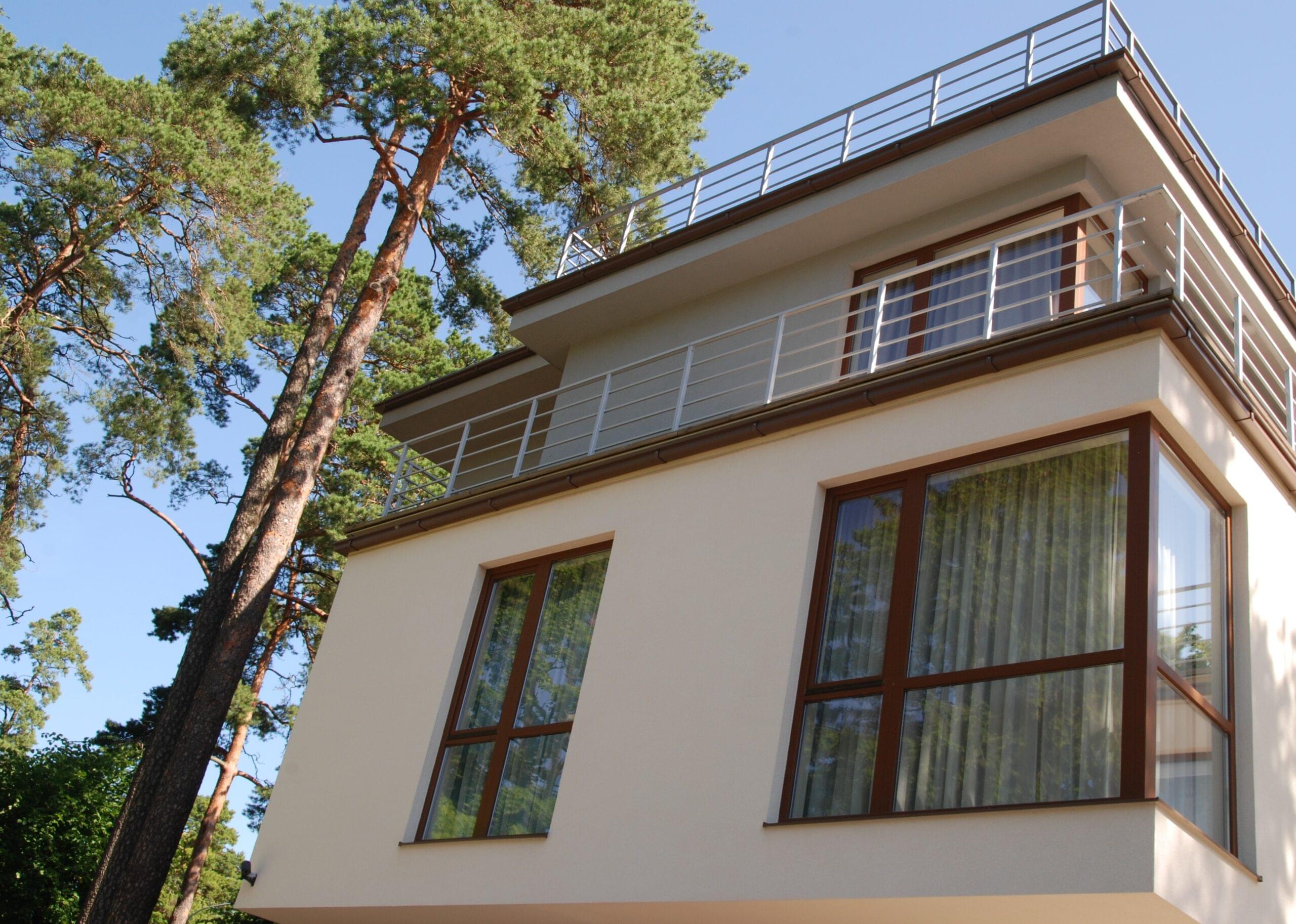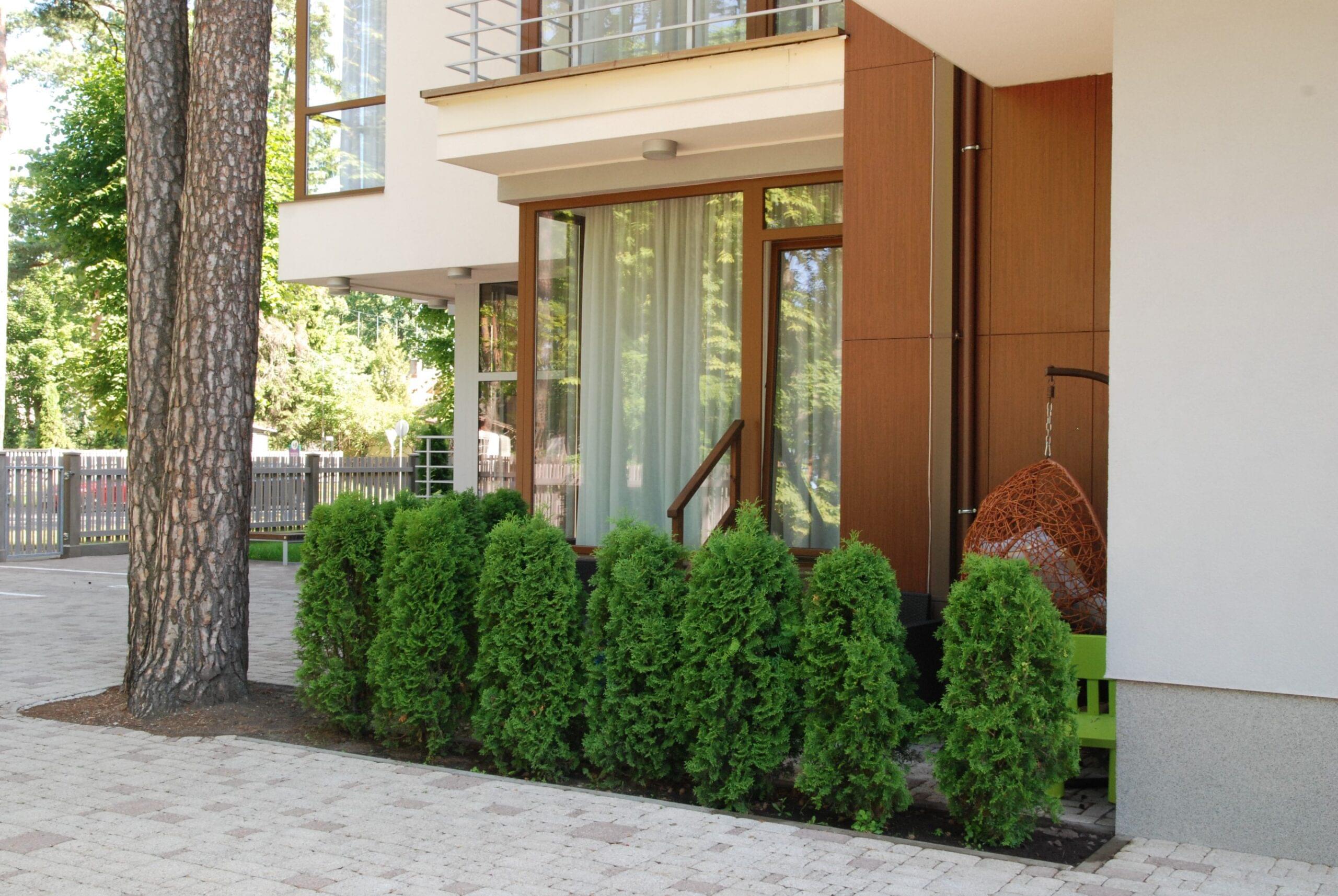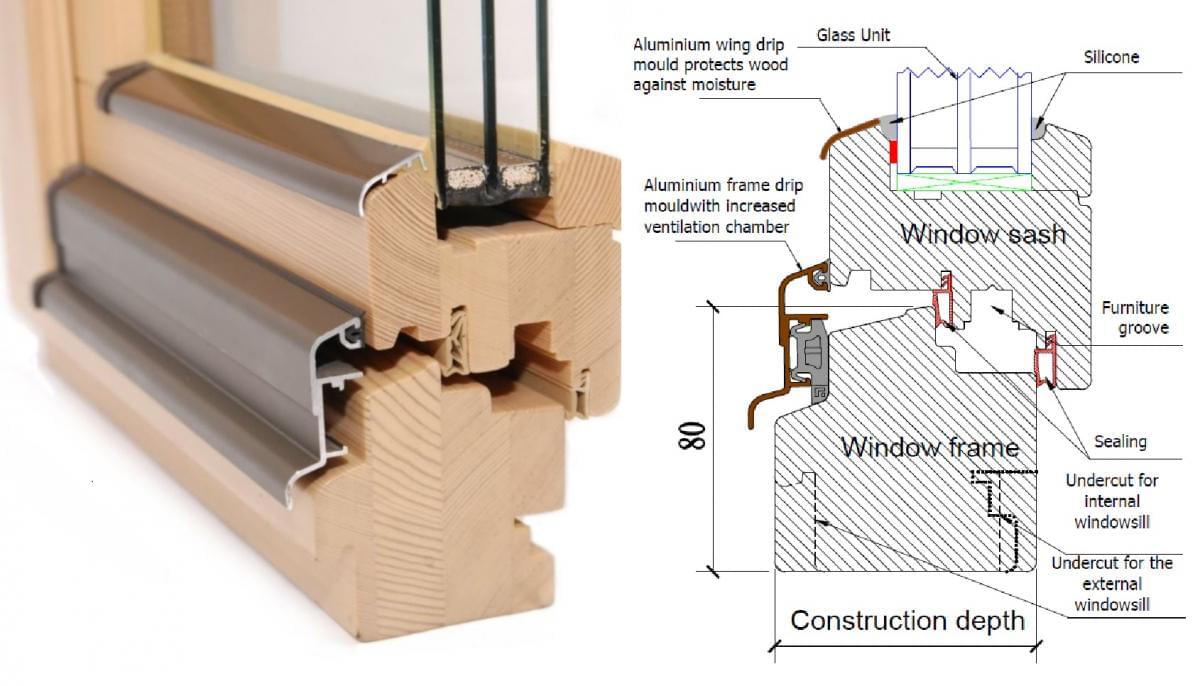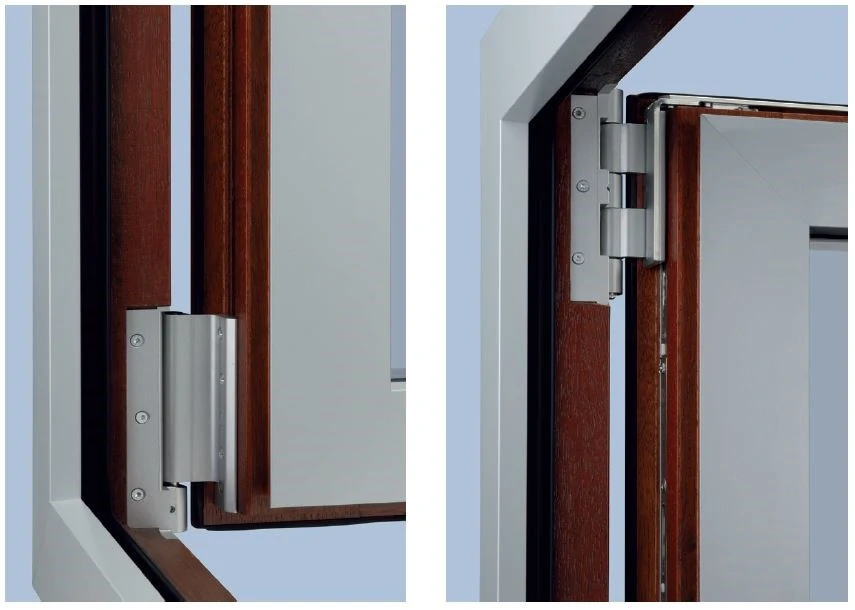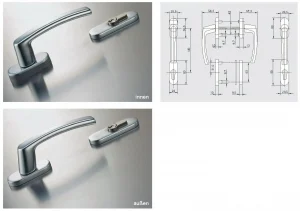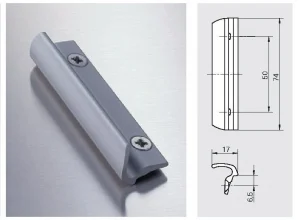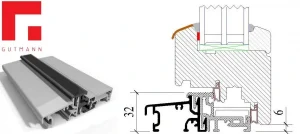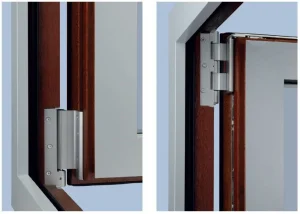WOODEN WINDOWS
WOODEN WINDOWS IV78

The inward opening wooden window system IV78 Climatrend is modern and environmentally friendly.
It provides excellent thermal and sound insulation properties, resistance to rain and wind load, easy use and maintenance of the window.
The window is suitable for both newly-erected and renovated buildings.
- Frame and sash profiles are 80mm wide and 78mm thick.
- The bottom of the frame contains cuts for easy installation of internal and external windowsills; it is possible to make grooves around the perimeter for mounting of plasterboard finish.
- Thermal conductivity coefficient of the window UW=1.0 W/m2K (calculated according to DIN EN ISO 10077-1 for a pine wood window with dimensions 1.23 x 1.48m).
- Sound insulation with a standard 40mm insulating glass unit is 32 dB, which means reduction of the noise level by around 1400 times.
- By choosing special sound-suppressing insulating glass units, it is possible to achieve the sound insulation of up to 48 dB.
- The finish system of wooden windows produced by the Finnish company TEKNOS offers environmentally friendly water-based varnishes and paints. The standard offer includes 54 tones of varnish and covering paints according to RAL or NCS catalogues.
- Company “ROTO” fittings allow opening, tilting or locking the window in the microventilation (winter ventilation) position.
The upper part of the turn-only and tilt&turn windows may also be sloping or arched; there are almost no restrictions to the shape of fixed windows.
For rectangular windows you may choose hidden, parallel sliding (PSK) or folding sliding (FS) fittings.
DO YOU HAVE ANY QUESTIONS?
WE WILL BE IN CONTACT WITHIN THE NEXT WORKING DAYS.
"*" indicates required fields
DO YOU HAVE ANY QUESTIONS?
WE WILL BE IN CONTACT WITHIN THE NEXT WORKING DAYS.
"*" indicates required fields

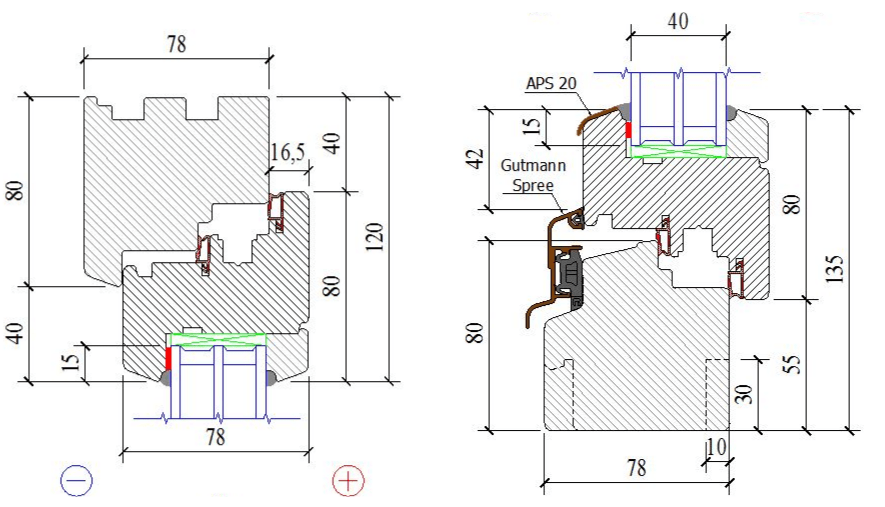
Wooden window frame and sash
Wooden window frame and sash are made from laminated wooden scantlings consisting of multiple layers glued in thickness (lamellae). The middle lamellae of the scantling are usually finger-jointed, the external can be both jointed (the so-called “glued” or optimized scantlings) and solid unjointed (fixed scantlings). Windows are most commonly made from pine or oak scantlings; however, material of other wood species is also available, for instance, larch, meranti, sipo etc.
The width of frame and sash profiles is usually 80mm, thickness 68, 78, 90 or 98mm. Windows opening inwards. The bottom of the frame contains cuts for easy installation of internal and external windowsills.
For finishing of windows and other structures, we apply the water-based impregnant, primer, paints and varnishes produced by Teknos. We offer 54 tones of tinted varnish and covering paints according to RAL or NCS catalogues.
Thermal conductivity coefficient of a window
Thermal conductivity coefficient of a window Uw represents the heat loss through a square meter of the window area when the temperature difference is 1°C. The lower the number, the more energy-efficient is the window (saving heat). According to the standard DIN EN ISO 10077-1, it is calculated and also verified for turn-only windows with dimensions 1230*1480mm. Uw is mainly determined by thermal conductivity of the insulating glass unit and wooden frame and sash, as well as by the spacers of the insulating glass unit and sash seals. By choosing an insulating glass unit with the so-called “warm” spacer, Uw of the window may be reduced by approximately 0.1 W/m2*K. Since usually the thermal conductivity of an insulating glass unit is significantly lower than that of the wooden frame and sash, then Uw will be higher for a smaller window and window with divisions. This means that heat losses through a square meter of the window will increase. For wooden windows, Uw ranges from 0.7 to 1.8 W/m2*K depending on the profile system, the type, size and configuration of the insulating glass unit.
Insulating glass unit
An insulating glass unit consists of 2 (a single-chamber unit) or 3 (a double-chamber unit) glasses and separating slats or spacers, the whole structure is glued and sealed using a butyl sealant. Spacers usually are made of aluminium or aluminium combined with plastic materials (the so-called “warm” spacers). The space between the glasses is filled with argon. Energy-efficient insulating glass units feature a special (selective) coating on the glass surface, which reflects the infrared (heat) radiation back into the room reducing heat loss. This feature of the insulating glass unit is characterized by thermal permeability coefficient Ug (W/m2*K). The smaller the coefficient, the less heat is lost through the insulating glass unit. For a single-chamber insulating glass unit (with 2 glasses) the Ug value is around 1.1 W/m2*K, for a double-chamber (with 3 glasses) it ranges from 0.8 up to 0.5 W/m2*K, depending on the glass type, the type of selective coating and thickness of the insulating glass unit. For comparison – for a 4mm single-layer glazing Ug =5.7 W/m2*K.
The sound insulation
The range of human ear sensitivity is extremely wide, therefore in acoustics the sound intensity is measured in logarithmic units – decibels (dB). The quietest sound a human ear can perceive (threshold of hearing) is assumed to be 0 dB. Different volume levels can be roughly described as follows:
20 dB- rustling leaves (100 times greater sound intensity than 0dB)
30 dB- whisper (1000 times greater sound intensity than 0dB)
40 dB- peaceful classroom (10000 times greater sound intensity than 0dB)
50 dB- a passing car (100000 times greater sound intensity than 0dB)
60 dB- human speech (1000000 times greater sound intensity than 0dB)
80 dB- heavy traffic in city
100 dB- perforator
120 dB- rock concert
140 dB- pain threshold (100000000000000 times greater sound intensity than 0dB)
180 dB- rocket launch
Therefore, if the sound insulation of a window is 30 dB, which means loss of sound intensity by 1000 times, the human voice speaking outside the window we hear as a whisper. The change in volume by 3 dB people perceive as barely noticeable.
Window fittings
Window fittings is a complex mechanism made from may components allowing to open, tilt and lock the sash of a window or balcony door in the microventilation position (“winter ventilation”). We use the system Roto NT produced by Roto which allows creating both rectangular and arched sashes, as well as sashes of other shapes.
The permissible width of a standard rectangular sash is 330÷1630mm, height 320÷2630mm, the maximum sash area 2.5m2, the maximum weight 150kg. Different non-standard solutions are available. For rectangular sashes, concealed hinges may also be selected; for heavy balcony doors (tilt&turn up to 200kg, turn-only up to 300kg) we use increased-load hinges Roto Powerhinge.
Handles and hinge cover plates
other types of handles
balcony door
Structure of the simplest balcony door (e.g., in apartment houses) does not differ from the structure of a window, but there are different options. Balcony doors often feature the so-called “smoker’s handle”, which helps to close and easily lock the balcony doors from outside.
Aluminium threshold, which is lower than a wooden frame with a drip edge (32mm aluminium instead of a 80mm wooden threshold) and also more durable, produced by Gutmann is possible.
Double-sided handle and a key with cylinder mechanism may be installed to be able to unlock and open the door also from the outside – e.g., for an exit to the terrace. Arched balcony door may be produced. For rectangular sashes, the concealed hinges may be selected, and by using the increased-load hinges you can build a big balcony door with heavy sashes.
Var izgatavot arkveida balkona durvis. Taisnstūra vērtnēm var izvēlēties slēptās eņģes, bet, izmantojot paaugstinātas slodzes eņģes, var veidot lielas balkona durvis ar smagām vērtnēm.
Silicone sealant
Silicone sealant seals the connection of the insulating glass unit around the perimeter both from the inside and from the outside. Possible colours of silicone – transparent, white, black, brown and grey in different gradations, in total – 16 different tones. We use the silicone MultiSil produced by Remmers.
-
9010 Pure white
-
Transparent
-
Lichtgrau/silbergrau
-
E6/EVI Natural
-
Manhattan
-
Zementgrau
-
Mittelgrau
-
Dunkelgrau
-
Oregon
-
E6/G216 Midle bronze
-
Mittelbraun
-
E6/G214 Dark bronze
-
Schwarz
Aluminium drip
Aluminium drip cap protects the lower horizontal part of the sash profile from moisture. The standard colours of the drip cap are white, anodised aluminium (EV1), light bronze and dark bronze, painting in RAL tone is possible. We use the aluminium drip cap produced by Aluron.
Rubber seals
Rubber seals around the sash perimeter provide sealing of the window in closed position, as well as protect the closing mechanism or fittings from the impact of external environment. Wooden windows usually have 2 or 3 sealing contours. We use the rubber seals produced by Deventer. Possible colours:

